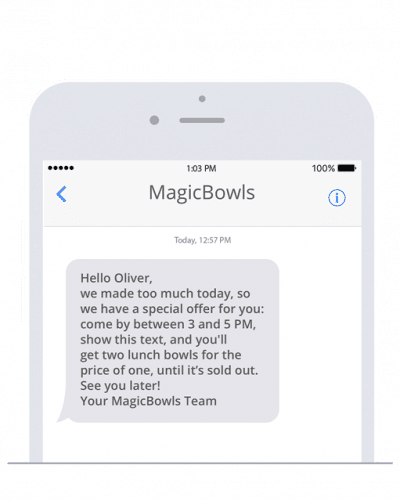One of the reasons SMS are so popular is that they are a very personal medium. We receive them on our cell phones, which we use to stay in touch with the world, but also with family and friends. This personal contact with your customers is an opportunity you shouldn’t miss. The flip side of all this? When sending SMS to your customers, you need to be careful not to overdo it – too many messages will be perceived as intrusive… and then your customer will unsubscribe from receiving SMS very quickly.
Many people are aware of this fact, so it’s only natural that the question arises: how often should I text my customers? To shed some light on this, we’d like to take a look at the most common approaches and share our tips with you.
